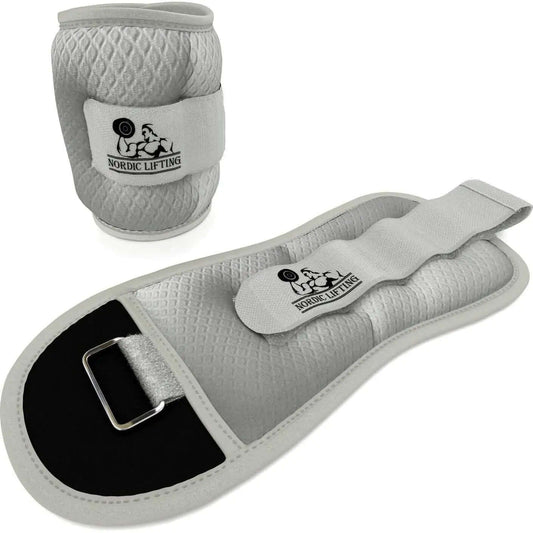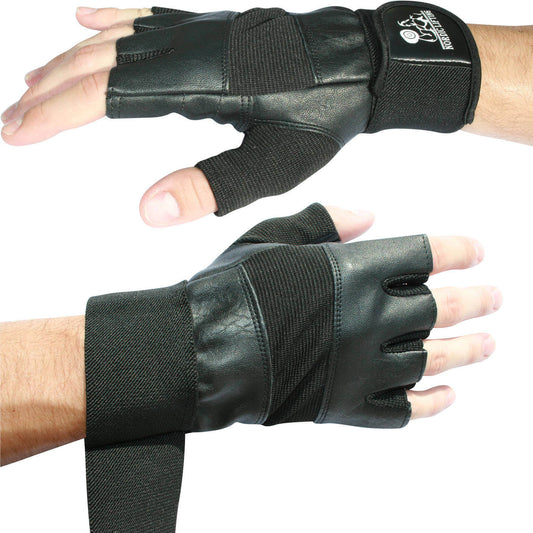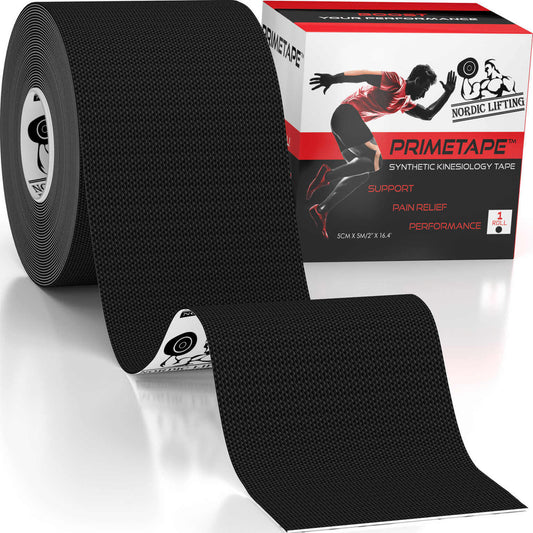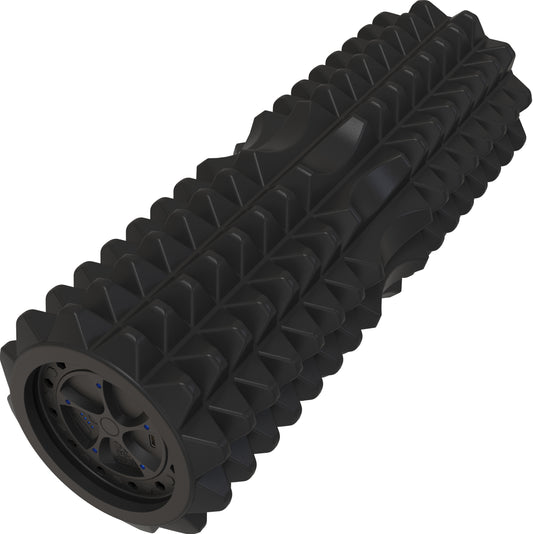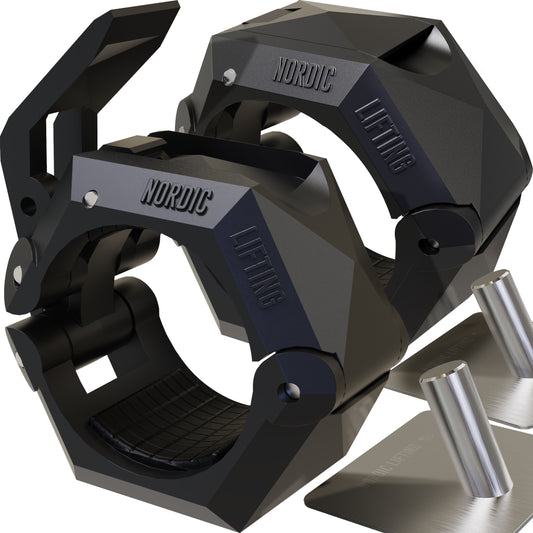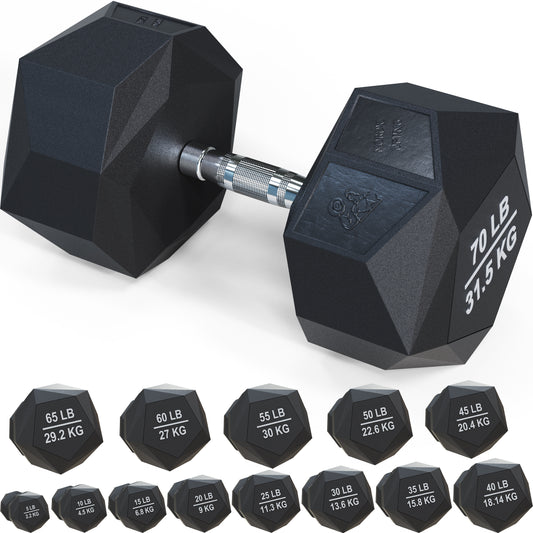Last Updated: April 18, 2025
Many people experience stiff or sore muscles, whether after workouts, long days at work, or just from sitting too much. Foam rolling is an easy self-massage technique anyone can use at home to help muscles feel less tight, recover faster, and move better overall. Using a foam roller involves moving your body over the roller to gently stretch and loosen tight areas, which can often help reduce discomfort and improve flexibility.
Even if someone is new to exercise or feeling intimidated by fitness gear, learning to use a foam roller is simple and flexible for most ages and abilities. By following basic steps and safety tips, users can target major muscle groups and even focus on tricky spots like trigger points. For step-by-step instructions and common mistakes to avoid, check out easy guides like the REI foam roller tutorial.
Key Takeaways
- Foam rolling can relieve muscle tightness and improve flexibility.
- It's important to follow proper use and safety guidelines with foam rollers.
- Foam rolling can be added to any routine for better recovery and movement.
What Is Foam Rolling?
Foam rolling is a kind of self-massage that uses a tool called a foam roller. The technique targets muscles and tissue to help with stiffness, soreness, and flexibility.
History and Purpose
Foam rolling first became popular in physical therapy and sports training in the 1980s. Over time, it moved into fitness centers, gyms, and home routines. Today, many people use foam rolling to recover after exercise, ease muscle pain, or warm up before activity.
The main purpose of foam rolling is to help muscles recover by breaking up tight spots, called trigger points. It is often recommended for athletes and those with muscle tightness. Foam rolling can also help prepare the body for a workout or help it relax afterward. The technique offers an easy way to do self-myofascial release (SMR) at home.
A foam roller is a simple cylinder made of dense foam. Some rollers are smooth, while others have bumps or textures to target deeper areas.
Understanding Fascia
Fascia is a layer of tissue that wraps around muscles, bones, and organs. It helps muscles move smoothly and keeps body parts in place. Healthy fascia is stretchy and flexible.
When fascia gets tight or sticky from injury, exercise, or no movement, it can limit movement and cause pain. Foam rolling helps loosen and stretch the fascia. This makes it easier for muscles to move and can reduce the feeling of tightness.
Research suggests that foam rolling supports better mobility by keeping fascia and muscles working well together. Proper care of the fascia helps speed up recovery and can lower the chance of getting hurt.
Myofascial Release Explained
Myofascial release is a technique that targets both muscles and fascia. The term "myo" means muscle, while "fascial" refers to fascia. There are two main forms: done by a therapist or done on your own using tools like a foam roller (self-myofascial release).
When someone uses a foam roller, body weight applies pressure to tight areas. The rolling movement helps break up knots and restrictions in the tissue. This lets the muscles relax and fascia return to a healthy state.
Benefits of myofascial release with a foam roller may include less soreness, better flexibility, and reduced muscle tightness. People who use foam rolling as part of their regular routine often report better comfort and movement in daily life.
Benefits of Using a Foam Roller
Foam rolling is a common method for easing tight muscles and helping with athletic recovery. It is used by many people to improve how their bodies feel and move after physical activity.
Improved Muscle Recovery
One of the main benefits of foam rolling is better muscle recovery. Rolling helps increase blood flow to the muscles, which brings in oxygen and nutrients that help repair tissue after a workout. This blood flow can speed up recovery time and reduce swelling or stiffness that happens after exercise.
When muscles are worked hard, waste products like lactic acid can build up. Gentle pressure from foam rolling helps move this waste out, making muscles feel fresher more quickly. Research shows that using a foam roller before and after exercise can help reduce muscle fatigue.
Athletes or people who exercise often use foam rolling so they can return to training sooner. Regular foam rolling is simple to do, and it can be an easy part of any recovery routine. For more information, visit this guide on recovery benefits and best practices.
Enhanced Range of Motion
Foam rolling can also help improve range of motion. This means the joints can move more freely, and muscles can stretch without feeling too tight.
By rolling over sore or tight areas, the tissue releases, which allows the muscle to work more smoothly. This can make it easier to reach, bend, or stretch while playing sports or doing regular activities. Improved range of motion may also help people avoid injuries caused by stiff muscles or joints.
Foam rolling is useful for people who feel muscle tightness from sitting a lot or from sports. With better range of motion, workouts and training sessions feel easier and movements are more comfortable. Learn more about how foam rolling supports range of motion and flexibility.
Reduction of Muscle Soreness
Another important benefit is less muscle soreness after working out. Rolling muscles with a foam roller can help break up "knots" or tight spots that often cause pain.
People who use a foam roller after exercise often feel less discomfort or soreness the next day. The gentle pressure calms muscle fibers, which makes it easier for the body to relax and heal. It can also help reduce inflammation in muscles after hard workouts or new activities.
Less soreness means people can return to sports or exercise routines sooner. Consistent foam rolling can help keep muscles ready for movement and decrease the chance of aches slowing someone down. Find more details on ways to reduce muscle soreness and feel better after activity.
Choosing the Right Foam Roller
Picking the best foam roller depends on the density, texture, and size a person needs. Features like firmness, length, and special shapes can change how effective and comfortable the foam rolling experience is for different muscles and pain tolerance levels.

Types of Foam Rollers
Foam rollers come in several densities: soft, medium, and firm. Soft foam rollers are gentle and good for beginners or those with lower pain tolerance. Medium-density rollers offer more support and are preferred by people who want balanced pressure without much discomfort. Firm rollers are for deep tissue massage and athletes who need stronger pressure for muscle knots.
Texture also matters. Smooth rollers give even pressure and are more comfortable for most users. Textured rollers have ridges or bumps that target knots, increase blood flow, and help with trigger points, but they may feel too intense for people new to foam rolling.
The REI Expert Advice guide shares that beginners should start with smooth, medium-density rollers, while those needing deeper work can try more firm or textured options.
Selecting Shape and Size
The most common shape is a cylinder, but foam rollers also come in half-round and contoured styles. Full-length rollers, around 36 inches, are versatile and can be used for the back, legs, and larger muscle groups. Shorter rollers, usually 12 to 18 inches, are easier to travel with and are good for targeting smaller areas like arms and calves.
A high-density round foam roller is a reliable all-around choice. When picking a size, a longer roller is better for working on the whole back or for balance exercises, while a shorter one is best for portability and smaller muscle groups.
Some rollers have a flat base or unique contours. These can provide extra stability or help reach hard-to-target muscles.
Foam Balls and Alternatives
Foam balls are smaller than regular foam rollers. They are made to press into specific spots such as the shoulders, hips, and glutes, or other areas where a roller is too large or awkward to use. Foam balls range in firmness, allowing users to pick the right pressure for their needs.
Other alternatives include sticks and massage canes. Sticks can roll out tight muscles, especially in the legs and arms, while massage canes reach the upper back or neck easily.
Using a mix of foam rollers and foam balls helps target large muscle groups and small trigger points. Experimenting with different shapes and densities helps a person find the best tool for their body and comfort level.
How to Use a Foam Roller Properly
Proper foam rolling helps relax muscles, ease tension, and support recovery. Key steps include prepping the body, using correct techniques, and paying attention to body position and breathing.
Preparation and Warm-Up
Before using a foam roller, a light warm-up makes muscles more receptive to self-myofascial release (SMR). Simple activities like brisk walking, dynamic stretches, or five minutes of easy cycling boost blood flow. Warm muscles respond better and reduce the risk of discomfort or injury during foam rolling.
It’s important to wear comfortable clothes and use a firm but not overly hard foam roller. The roller should be placed on a flat, open surface clear of obstacles. For extra stability, a mat or rug can help keep the roller steady.
Preparing ahead by planning which muscle groups to target can give the session more purpose. Most people start with the larger muscles, such as quads, hamstrings, and calves. Each part of the body should be rolled for 30 seconds to 2 minutes, depending on soreness.
A bottle of water should be on hand as staying hydrated helps muscles respond to SMR. It’s best to avoid rolling over joints or bone.
Basic Foam Roller Exercises
Several basic exercises can be done with a foam roller to target different muscle groups. For the quadriceps, lie face down and roll from the hips toward the knees, moving slowly and pausing on sore spots. For the hamstrings, sit with legs extended and roll under the backs of the legs.
Rolling the calves involves sitting with the roller beneath the lower legs, raising the body with hands, and moving back and forth from the ankles to the knees. For the upper back, lie on your back with the roller across the shoulder blades and move up and down from mid-back to shoulders while keeping the neck supported.
When rolling, use slow, gentle movements. Too much pressure can lead to bruising or irritation. For more detailed how-tos and routines, see these basic foam roller exercises for step-by-step guidance.
Here is a simple table of common target areas and recommended time:
| Muscle Group | Suggested Time (seconds) |
|---|---|
| Quads | 30–60 |
| Hamstrings | 30–60 |
| Calves | 30–60 |
| Upper Back | 30–60 |
Self-Myofascial Release Techniques
Self-myofascial release (SMR) is the main benefit of foam rolling. The goal is to apply gentle, even pressure to tight or sore muscles to help them relax. SMR can relieve knots, also known as trigger points, and improve flexibility.
The technique is simple: Position the roller under the target area, use body weight to apply pressure, and slowly move back and forth. When a tender spot is found, hold steady over it for 20–30 seconds or until the discomfort fades a little. Do not rush, and avoid rolling directly over joints, the neck, or the lower back.
Switching angles or crossing one leg over the other can increase pressure if needed. If any sharp pain or numbness occurs, stop immediately. Foam rolling should feel like mild discomfort, not intense pain. For more about this method, check out a guide to self-myofascial release using foam rollers.
Correct Breathing and Posture
Breathing and posture influence the results of foam rolling. Slow, deep breaths help the muscles relax, making self-myofascial release more effective. Inhale through the nose and exhale through the mouth throughout every movement.
Keep the core engaged and the spine in a neutral position, especially during exercises like rolling the back or quads. Shoulders should stay relaxed and away from the ears. Avoid arching or twisting the body in ways that feel forced or unnatural.
Proper posture keeps movements controlled, which helps avoid strain or injury. Focus on keeping even and steady pressure on the muscles. Staying mindful of breathing and posture will improve comfort and results during every foam roller session.
Targeting Major Muscle Groups
Using a foam roller in the right way helps loosen tight muscles, reduce soreness, and improve flexibility. Good technique helps target both large and small muscle groups and avoids discomfort or injury.
Quads and Hamstrings
To work the quads, the person should lie face down with the foam roller under their thighs. Using their arms for support, they roll back and forth from the top of the knee up toward the hips. Keeping the movements slow and controlled helps find tight spots. If a tender area is found, holding that position for a few seconds allows for more release.
For the hamstrings, sitting on the ground with the foam roller under the back of the thighs is important. The person uses their hands to lift the body slightly and roll from just above the knees to the bottom of the glutes. By turning the legs slightly inward or outward, they can focus on different parts of the hamstring muscles. Repeating this for 30–60 seconds makes the most difference. These steps help with foam rolling the quads and hamstrings safely.
Calves and Shins
To target the calves, the person sits with their legs extended and places the foam roller under the lower legs. With hands on the floor for balance, they slowly roll from just above the heel up to the back of the knees. Focusing on the inside, outside, and center of the calves can help relieve common stiffness, especially after running or jumping.
For the shins, using a foam roller can be helpful for those who experience shin discomfort. Kneeling and placing the roller under the front of the lower leg, the person carefully rolls from just below the knee to above the ankle. Keeping the movement gentle and avoiding pressure on the bone is important to prevent discomfort.
Glutes and IT Bands
For the glutes, sitting on the foam roller and crossing one ankle over the opposite knee helps target the muscle on that side. The person shifts their weight slightly to roll over the glute muscle in small, controlled movements, about 30–60 seconds per side. This can ease tension, especially for people who sit for long periods.
To target the IT bands, lying on the side with the roller under the outer thigh works best. The top leg should be crossed in front for balance. Rolling from just below the hip down to just above the knee encourages the area to loosen and can help reduce tightness along the outside of the leg. Proper technique is key for foam rolling the IT bands effectively.
Advanced Techniques for Trigger Points
Trigger points, also called muscle knots, can cause pain and tightness. Using a foam roller with the right methods makes it possible to target these specific problem areas for better muscle health and flexibility.
Identifying Trigger Points
A trigger point is a sensitive area within muscle tissue that feels tight or tender. These points may hurt when pressed or rolled over. Muscle knots often develop after repetitive movement, poor posture, or heavy exercise.
To find trigger points, gently press or roll the muscle with the foam roller. Areas that feel more painful or tight compared to the rest are likely trigger points. Slow and mindful movements help in pinpointing the exact location. Palpating with fingers before rolling can also help identify these areas. Targeting these specific spots is key to reducing ongoing muscle discomfort and preventing new knots from forming.
Managing Muscle Knots
To treat muscle knots with a foam roller:
- Position the roller under the knot.
- Slowly roll back and forth over the area.
- Pause and hold on the most sensitive spot for 30–90 seconds or until discomfort starts to decrease.
Holding pressure in one spot can help the muscle tissue relax. Breathing deeply while rolling encourages the muscle to release tension. Avoid rolling too quickly; a slower approach is more effective in breaking up the knot. Many people see the best results when they slowly roll until they find the most tender spot and hold. Doing this regularly may support better muscle recovery and lower the risk of future knots.
Addressing Myofascial Adhesions
Myofascial adhesions are areas where layers of connective tissue stick together, sometimes causing pain or limiting movement. Foam rolling can help by separating these tissues and improving flexibility.
To address adhesions, roll the foam roller perpendicular to the muscle fibers. This technique helps in reducing muscle tension and promoting better range of motion. When working on stubborn spots, use steady but gentle pressure to avoid injury. Over time, this practice may improve both comfort and overall mobility, as shown by those who use a foam roller perpendicular to muscle fibers to improve flexibility and reduce tension. Consistency and patience are necessary for the best results.
Foam Rolling for Specific Needs
Foam rolling can target different goals, such as easing sore muscles, supporting healing after injury, and helping the body move more freely. People use these tools before and after workouts to help manage tightness and improve their overall performance.
Injury Recovery and Inflammation
Foam rolling helps with healing by improving blood flow to the muscles. This increased circulation can support the body’s natural repair process. It may also help reduce mild swelling by moving fluid away from the injured area.
When rolling after an injury, gentle and slow pressure is key. Avoid rolling directly over sharp pain or open wounds. It’s better to work around the area, starting with short sessions and gradually increasing time as comfort improves. Consistent use, several times a week, may help reduce muscle stiffness and speed up recovery.
People with chronic inflammation or conditions like tendinitis might find relief using a foam roller. However, checking with a healthcare provider before starting is important, as improper use could worsen certain injuries. For more tips and step-by-step guidance, see how to get started with foam rolling.
Improving Flexibility and Balance
Foam rolling can help lengthen tight muscles, which makes it easier to stretch and move. Loosening muscle knots before stretching often helps with deeper flexibility. This practice works well for areas like the calves, thighs, and back.
Balance can also improve by using a foam roller during exercises. Simple movements like rolling one leg at a time build control and coordination. Over time, these exercises may help prevent injury by supporting better posture.
Holding each position for 20 to 30 seconds brings the best results, always staying within a comfortable range. Pairing foam rolling with regular stretching can increase flexibility even further. For detailed steps, check out this foam rolling guide.
Foam Rolling for Runners
Runners use foam rolling to reduce muscle soreness, prevent injuries, and keep their bodies moving well. Tight muscles, especially in the calves, hamstrings, and quads, are common in runners. Rolling these areas can help loosen knots and improve performance.
A good routine includes rolling before runs to warm up and after runs to cool down. This helps with blood flow, eases tension, and may lower the risk of common running injuries. Important spots to focus on are the IT band, glutes, and feet.
Begin with light pressure, rolling slowly for 1 to 2 minutes on each muscle group. Runners should avoid rolling over joints or bones. See a full-body foam roller routine made for athletes for more practical examples.
Safety Guidelines and Common Mistakes
Foam rolling can help ease muscle tension, but doing it wrong can cause discomfort or even injury. Understanding the right way to use a foam roller helps prevent sore muscles, misuse, and wasted effort.
Avoiding Overuse
Spending too much time on any single area can make muscles more sore instead of helping them recover. A good rule is to roll each trigger point for 20–30 seconds and avoid rolling back and forth too quickly. Slower motions are safer and more effective at finding muscle knots.
Common mistakes to avoid:
- Rolling rapidly or placing too much pressure on sensitive spots
- Using the foam roller on the same muscle group for more than two minutes per session
- Treating foam rolling as a pain tolerance test
Overusing a foam roller may lead to bruising or more pain. It’s best to include foam rolling in a balanced routine and give muscles time to rest. More isn’t always better. For additional tips, see these foam roller dos and don’ts.
Recognizing Contraindications
Foam rolling is not safe for everyone in every situation. Some people should stay away from foam rolling or ask a doctor first. Those with severe osteoporosis, recent fractures, or certain medical conditions may risk further injury.
Do not foam roll:
- Over open wounds or recent stitches
- On areas with deep vein thrombosis
- Near joints or bones that are still healing
- If feeling sharp or severe pain
Pregnant individuals and those with chronic illnesses should get advice from a healthcare provider. Listening to these warnings helps avoid unnecessary harm and keeps foam rolling safe.
Listening to Your Body
Paying attention to your body’s signals is important. Foam rolling should not feel extremely painful. Mild discomfort is normal, but sharp pain often means something is wrong and rolling should stop right away.
Key signs to watch for:
- Tingling or numbness, which could mean nerve pressure
- Severe muscle soreness lasting more than a day
- Bruising, swelling, or feeling worse after rolling
If a certain spot continues to hurt or feels strange, take a break. Breathing deeply and relaxing the muscle can make foam rolling more effective. For proper techniques, check out this beginner’s guide to foam rolling.
Integrating Foam Rolling Into Your Routine
Foam rolling can help with muscle recovery, flexibility, and injury prevention. To see benefits, it’s important to use it correctly, pair it with other recovery methods, and watch for progress in how your body feels and moves.
Recommended Frequency and Duration
Foam rolling works best when done regularly, not just when muscles feel tight. Many experts suggest using a foam roller three to five times a week, though some people foam roll daily.
For most people, spending 1 to 2 minutes per muscle group is enough. It is helpful to roll slowly and take deep breaths. This lets the body relax and the muscles release tension. Total foam rolling sessions often last 10 to 20 minutes.
The best times to foam roll are before a workout, to help warm up muscles and increase blood flow, or after exercise, to promote muscle recovery. If a spot feels extra tender, pause and hold gentle pressure for 20-30 seconds, then move on.
Combining With Other Recovery Methods
Foam rolling is just one part of a good recovery routine. Stretching after foam rolling can help improve flexibility and range of motion. This is because muscles may be more relaxed after rolling.
Pairing foam rolling with other techniques like dynamic warm-ups, static stretching, and sometimes icing or heat packs can also help muscle recovery. Many athletes use both foam rolling and traditional stretching in a warm-up and cool-down routine for best results.
Some may also use massage, good hydration, rest, and a balanced diet to further speed recovery. Tracking how different methods affect muscle soreness and performance can help find the best mix for each person.
Tracking Progress Over Time
Tracking foam rolling progress helps show if the routine is working. A simple way to do this is to keep a small journal or log on a phone. Mark when you roll, which muscles you target, and how you feel after each session.
Some signs of progress may include less muscle soreness, fewer aches, quicker recovery times, or improved flexibility. Noticing changes in exercise performance or comfort during daily movement can also be a good indicator.
Periodically, test flexibility or check if a previously tight area now feels looser. If pain or soreness decreases over weeks, this points to more effective recovery. Making notes helps adjust the foam rolling routine as needed and keeps motivation high.
Frequently Asked Questions
Foam rolling can target muscles in the back, legs, glutes, shoulders, and neck. Learning about specific techniques and exercises helps people safely use a foam roller for pain management, flexibility, and muscle recovery.
What are the best techniques for using a foam roller on the back?
The safest method is to start by lying down with the roller placed under the upper back or shoulders. Slowly roll up and down, pausing on tight spots. Avoid rolling directly on the lower back to prevent strain.
Support the head and neck with hands if needed. Move gently and avoid fast or jerky movements for better results. More details can be found in this guide to using a foam roller on your back.
Can you provide a list of exercises for the legs using a foam roller?
Popular leg exercises include rolling the quads, hamstrings, and calves. For quads, lie face down and move the roller from the hip to just above the knee. For hamstrings, sit with legs extended and roll between the back of the knees and glutes.
Rolling calves involves sitting and placing the roller under the lower leg, moving from the ankle up to the back of the knee. Move slowly and adjust the position to target sore spots.
What is the proper way to use a foam roller for lower back issues?
It is important not to roll directly on the lower back. Instead, focus on the muscles around it, such as the glutes and upper back. Carefully roll from just above the hips up towards the mid-back, but stop before reaching the ribs or spine.
Using the foam roller under the hips or upper glutes can relieve lower back tightness. Make sure to keep the core engaged for extra support.
How can I effectively use a foam roller for my glutes?
Sit on the foam roller with feet flat on the floor and hands behind for balance. Cross one ankle over the opposite knee to expose the glute. Roll forward and back slowly, pausing on tender spots.
Switch sides to work both glutes. Adjust body position to reach different angles of the muscle.
What are the benefits of using foam rollers regularly?
Foam rolling may help increase flexibility and mobility. It can also reduce muscle soreness after exercise and support faster recovery. Using a foam roller is a form of self-massage that may target tight areas, help break up adhesions, and release muscle knots.
Some people use foam rollers during warm-ups to improve blood flow and movement quality. Regular use can contribute to better muscle health, according to expert recommendations.
Which foam roller exercises can I do to alleviate shoulder and neck tension?
Foam rolling can be used gently around the shoulders by lying on the roller and moving it under the upper back and shoulder blades. To avoid strain, do not roll directly on the neck.
Instead, target the upper back near the base of the neck and the upper trapezius. Use slow, small movements. For the shoulders, roll along the outside top of the arm, stopping if any discomfort occurs.







